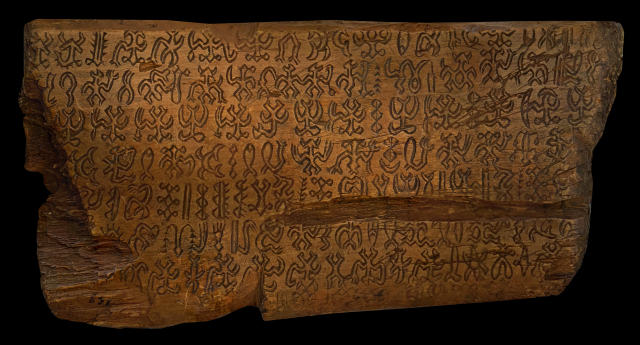Two research groups from the University of Bologna, both funded by ERC (European Research Council), together with international scholars, have published an article in Scientific Reports, a journal of the Nature group, demonstrating that highly interdisciplinary research leads to successful results. The two ERC projects that led the research are INSCRIBE - Invention of Scripts and their Beginnings, led by Professor Silvia Ferrara, and RESOLUTION, led by professor Sahra Talamo.
The research focuses on an undeciphered writing system from Easter Island (Rapa Nui), called Rongorongo. The island is located in one of the most remote areas of the world, in the depths of the Pacific Ocean. Writing has been invented very rarely in human history, so discovering a potentially original form of writing in such a place is remarkable.
Silvia Ferrara and Sahra Talamo wrote the article to shed light on the chronology of the Rongorongo writing and to assess whether it might have been created before the arrival of the first European ships on the island, in the 1720s.
As all the inscriptions are made of wood, Professor Talamo's BRAVHO laboratory (Bologna radiocarbon laboratory devoted to human evolution) took samples of cellulose and produced for the first time an accurate and precise radiocarbon dating on four tablets kept in a small museum in Rome. The botanist Mike Friedrich from the University of Hohenheim in Germany also assisted the two research groups with the analysis of the tree species.
"The dates reveal interesting possibilities", says Professor Talamo. "One of the tablets stands out as an anomaly in our chronological model, showing an older age prior to the arrival of Europeans, while the remaining three tablets consistently indicate a period of primary usage in the 19th century, based on subsequent estimates."
"The dating of the wood of the tablet – explains Professor Ferrara – does not necessarily indicate the date of the inscription's engraving, but given the preservation circumstances, we cannot assume a much later date than when the wood used for the tablet was cut".
Sahra Talamo and Silvia Ferrara say: "For three out of the four tablets, our dates confirm a scenario in which the local population wrote their texts on wooden supports from external sources in a period following the arrival of the Europeans. However, this does not imply that the writing they used was not invented".
The glyphs used differ from any known writing system and lack close parallels, even in terms of inventory. Therefore, the Rongorongo could be one of the few independent writing inventions in human history, adding a layer of complexity to the narrative of the cultural and historical development of the inhabitants of Rapa Nui.
The findings from this research could have implications for the study of the invention of writing on a global scale, providing new contextualisation and approaches to understanding how often writing has been created from scratch.

